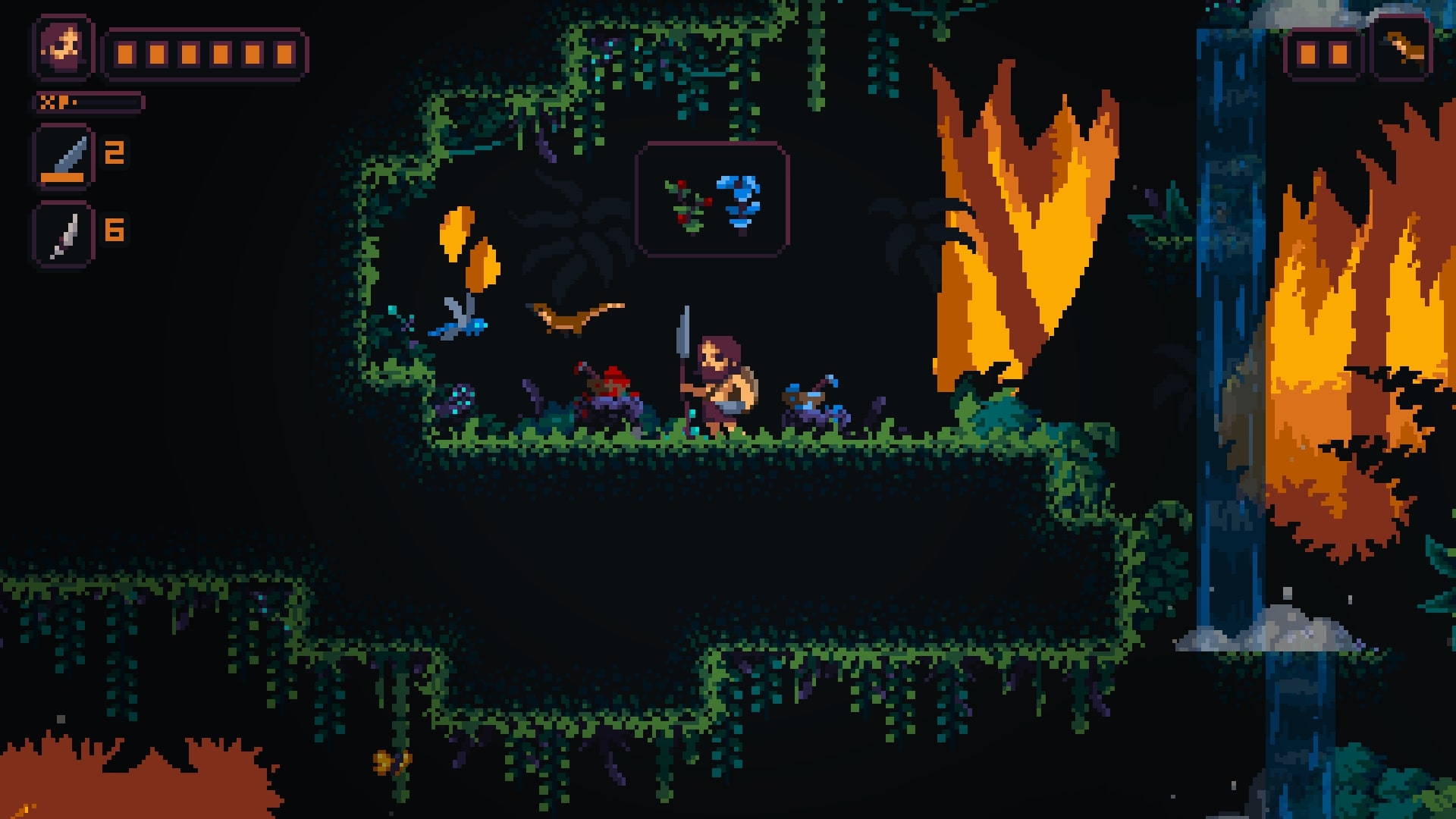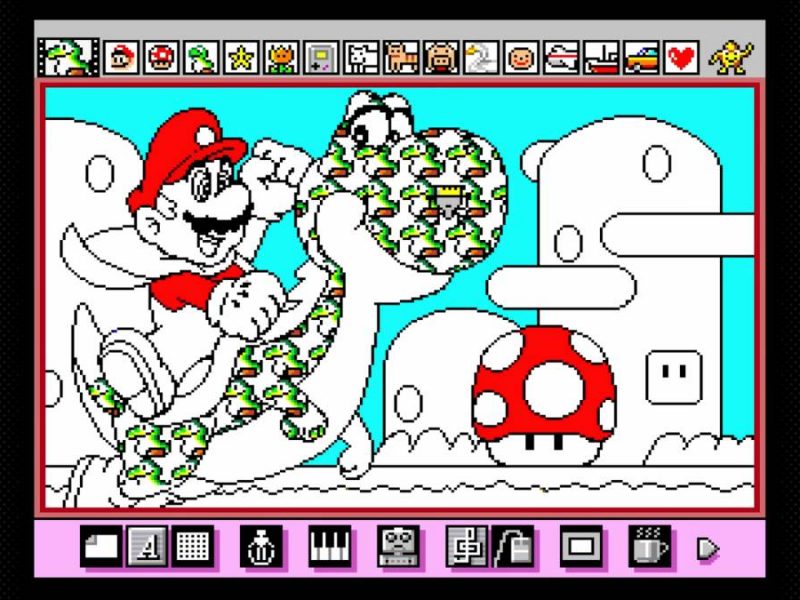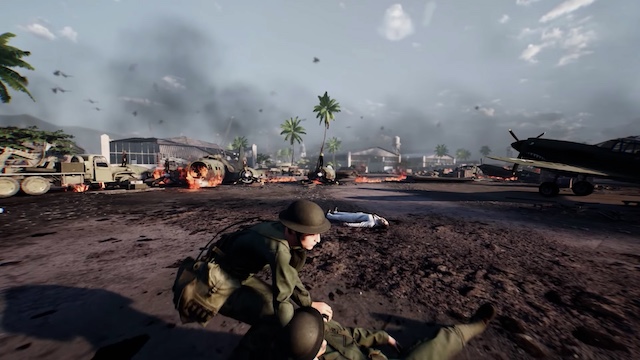Primal Planet is a pixel-art Metroidvania game set in an wild world teeming with dinosaurs, aliens, ruins, and mystery. You play as a father separated from his family, trying to reunite with them and survive the hostile environment. It’s the kind of game that immediately pulls you in with its atmosphere, then slowly tests your patience in ways both fascinating and frustrating.
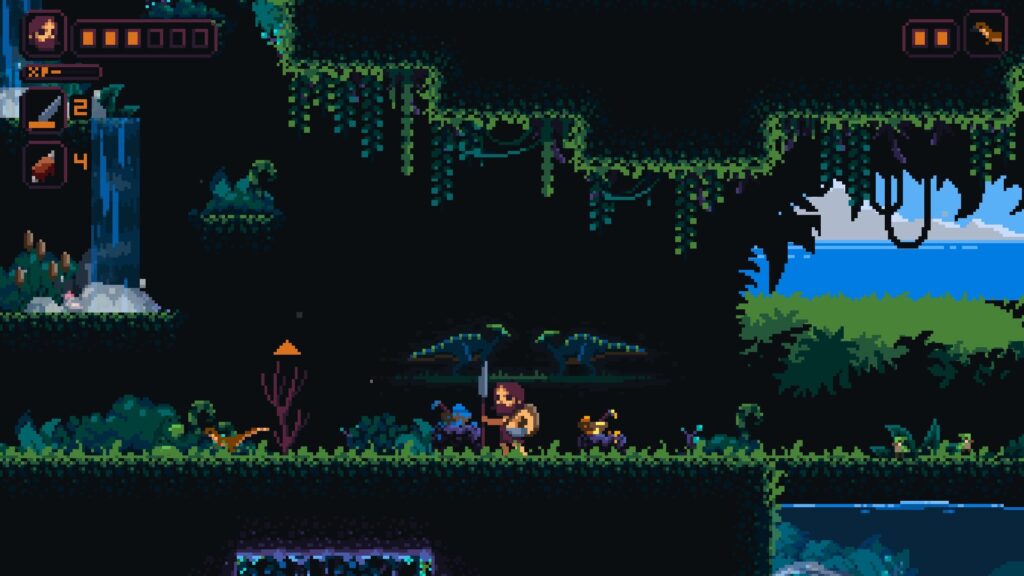
And here’s the wild part—it’s all made by one person, Seethingswarm..
A Visual and Musical Triumph
Let’s start with what Primal Planet absolutely nails. The pixel graphics are stunning. From jungle treetops to bioluminescent caves, every frame is packed with color and personality. The art doesn’t just look good—it feels alive. Even the smallest elements, like fireflies drifting in the evening light or the shifting glimmer of deep water, show a ridiculous level of care.
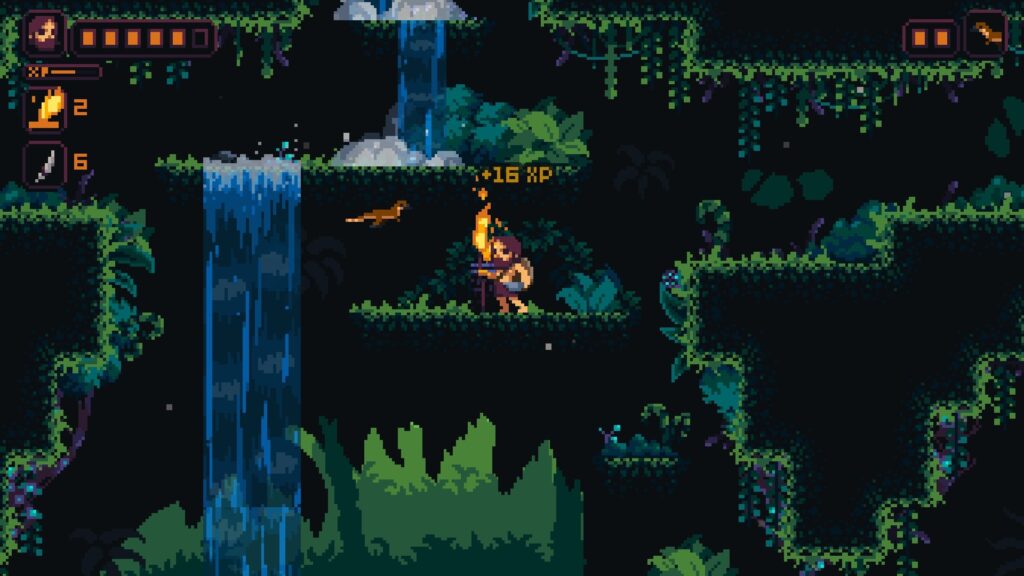
Animation is another strong point. Movements are smooth and full of charm, whether you’re clambering up vines, gliding over gaps, or interacting with creatures. There’s even emotional weight behind the small moments—holding your child’s hand, hugging your wife, or pausing to rest by a fire.
And the music? It’s brilliant. Warm, ambient, and nostalgic in all the right ways. Think Super Nintendo era soundtracks, but with modern richness. It wraps the whole world in a dreamy sense of wonder and sometimes melancholy. There’s no voice acting, but it’s not needed—the game communicates through music, movement, and subtle detail, and it does so beautifully.
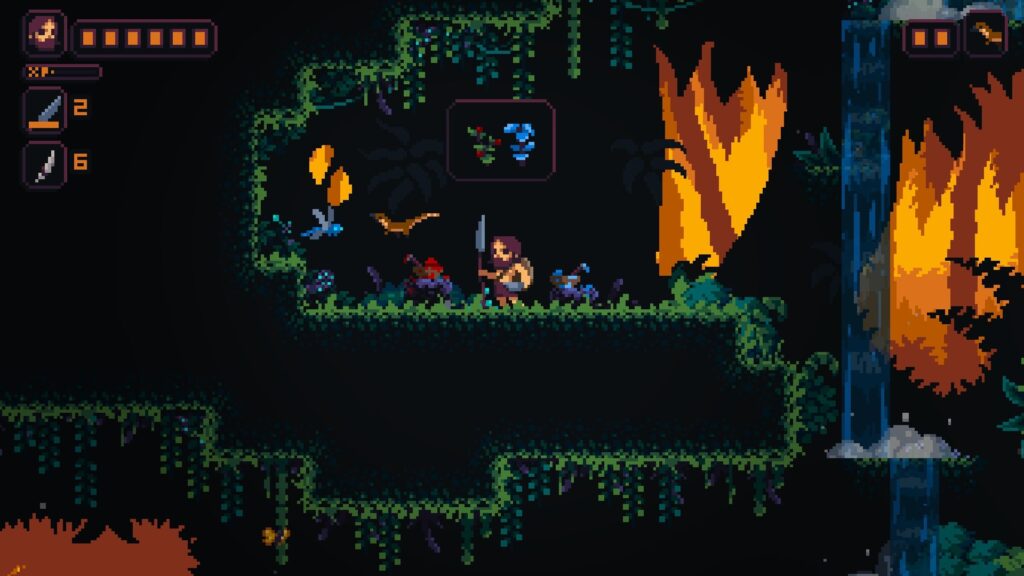
The Map System Is… Awful
Unfortunately, as soon as you try to explore with purpose, the cracks start to show—and the map is where the first big one appears.
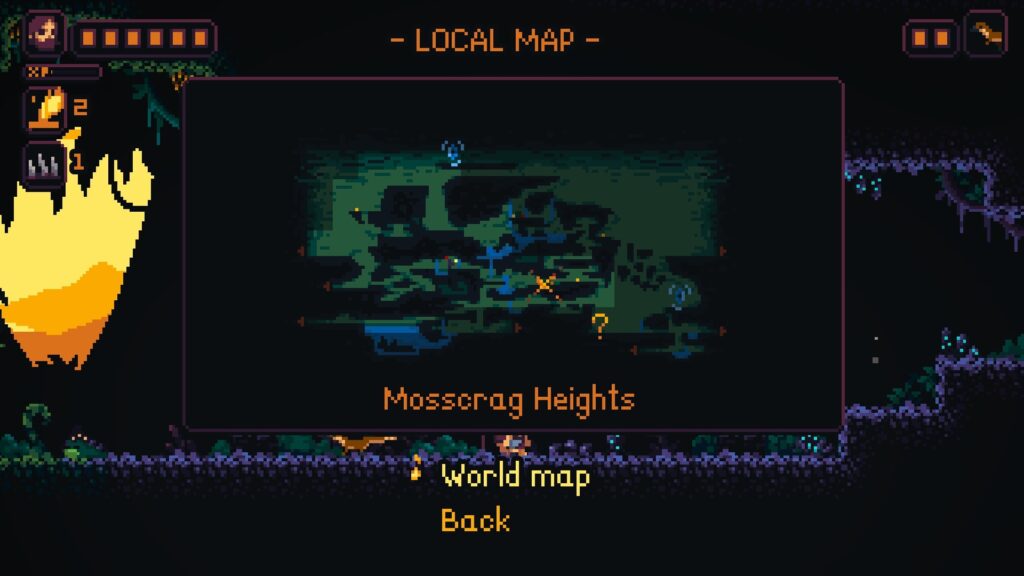
To put it bluntly: the map is terrible. The world map is pixelated and grainy, to the point of being nearly unreadable. You can barely make out where you are, let alone where you’re supposed to go. The local maps are even worse—vague, cluttered, and devoid of helpful markers. It feels like something sketched in MS Paint, slapped in as a placeholder, and never refined.
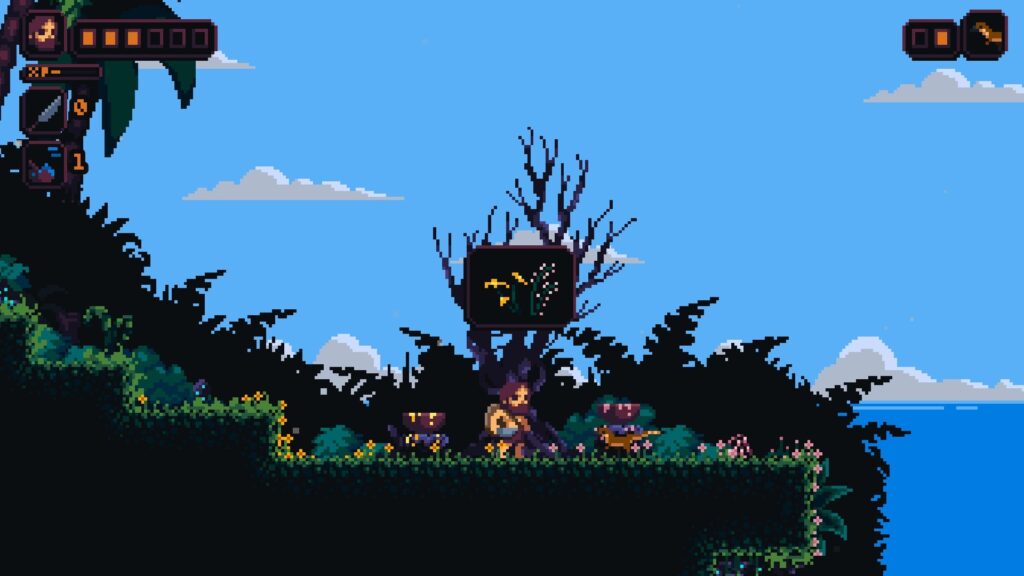
This wouldn’t be a massive issue if the game offered other forms of guidance—but it doesn’t.
You’re On Your Own
After a brief and guided opening section, Primal Planet opens up completely—and then sort of forgets to tell you what to do. There’s no objective list, no quest log, no breadcrumb trail. You’re dropped into a sprawling, interconnected world and expected to figure it out.
Now, for some players, this will be a dream come true. There’s something magical about discovering things organically, stumbling into new areas, or piecing together the world’s logic on your own.
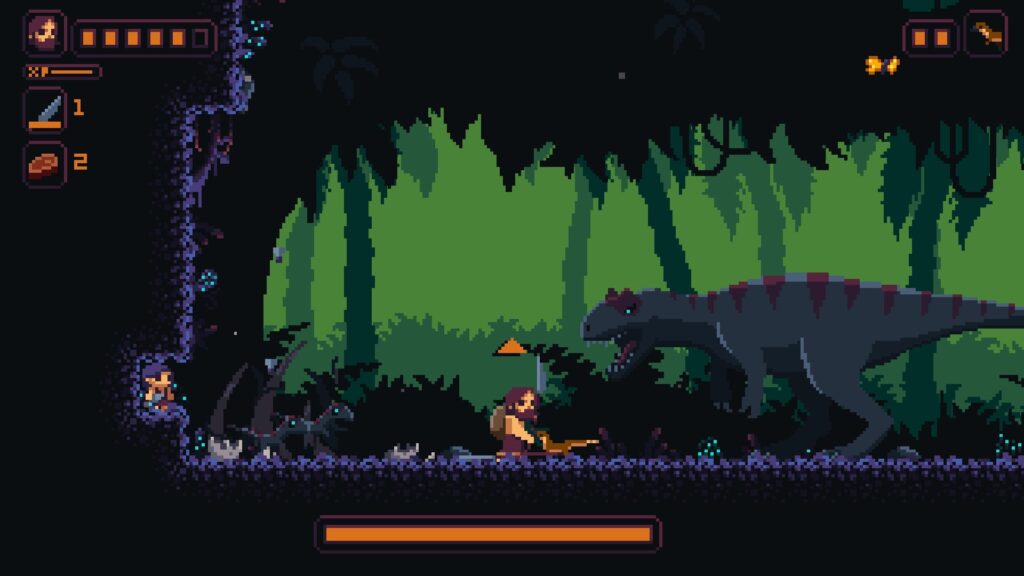
But for most people, the lack of guidance quickly becomes exhausting. You’ll spend a lot of time wandering in circles, rechecking the same caves, thorns and cliffs, unsure if you missed a new upgrade, a hidden switch, or just went the wrong direction an hour ago. The game isn’t deliberately cryptic—it just doesn’t help you at all.
And with that broken map? Yeah, good luck.
Combat Goes From Fun to Frustrating
Early combat in Primal Planet feels satisfying. Enemies telegraph their moves, you have enough tools to respond, and there’s a nice back-and-forth rhythm to it.
But as the game goes on, things take a turn. Enemies start hitting much harder, often without warning. Combat encounters that were once manageable become punishing out of nowhere, and the difficulty curve starts to feel jagged rather than gradual. You’ll occasionally walk into a room and just get destroyed without understanding what you did wrong.
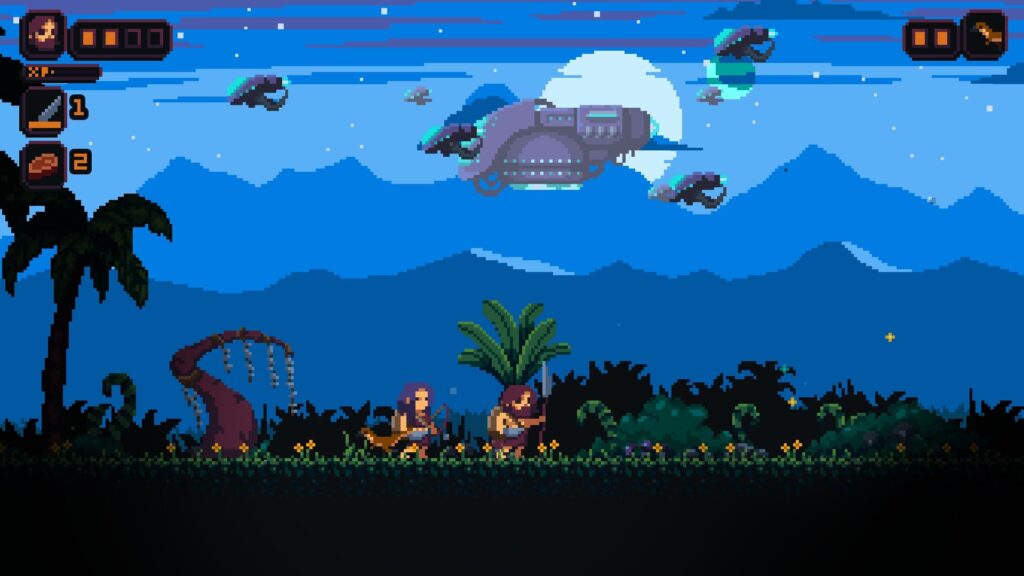
Part of this comes down to the game not explaining itself very well. So you might find yourself under-leveled for a challenge you didn’t even know you weren’t ready for.
Cool in Theory, Barely Explained
There are survival mechanics in Primal Planet, and they add an interesting layer—on paper. You’ll need to manage craft tools, cook food and sometimes protect yourself from extreme environments. You can even upgrade your hut and your inventory.
But here’s the catch: almost none of this is explained properly. Or atleast to my liking.
You pick up meat, wood, herbs, flint—but what do they actually do? You need to do a lot of menu jumping to figure out the use. Particularly because nothing is labelled and you need to under why this pixelated lump is different from the other pixelated lump. Its a headache on a small screen like the steam deck.
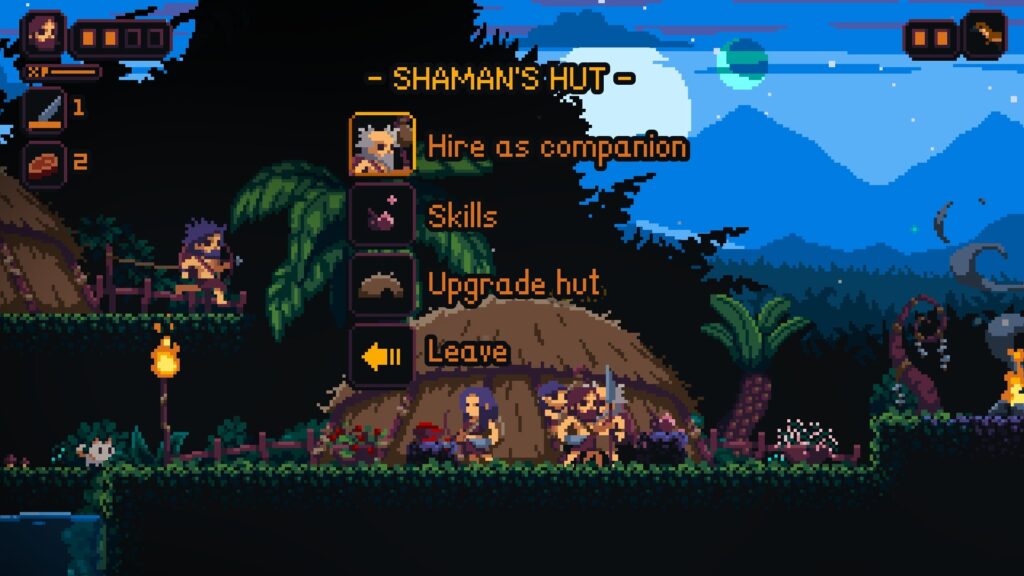
There’s definitely potential here. The systems are interesting, and they add variety beyond simple platforming and combat. But they need better onboarding—or at least a labelling to help you get started.
Wordlessly Done
Where Primal Planet really shines beyond its visuals is in the emotional tone it strikes. Without a single spoken word, the game tells a gentle, touching story about a father trying to reunite with his family. Your interactions—hugging your partner, protecting your daughter—feel heartfelt and grounding, even amidst the danger and chaos around you.

The storytelling is simple but impactful. The world is quiet and lonely, but it’s never hopeless. There’s a deep sense of care and warmth underneath all the alien wilderness and lurking predators.
Made By One Developer: It Shows, In the Best and Worst Ways
It’s important to recognize that Primal Planet was made by a single developer. That’s an incredible achievement. From art to animation, from world design to the music, it’s clear that this was a passion project built from the ground up with heart.
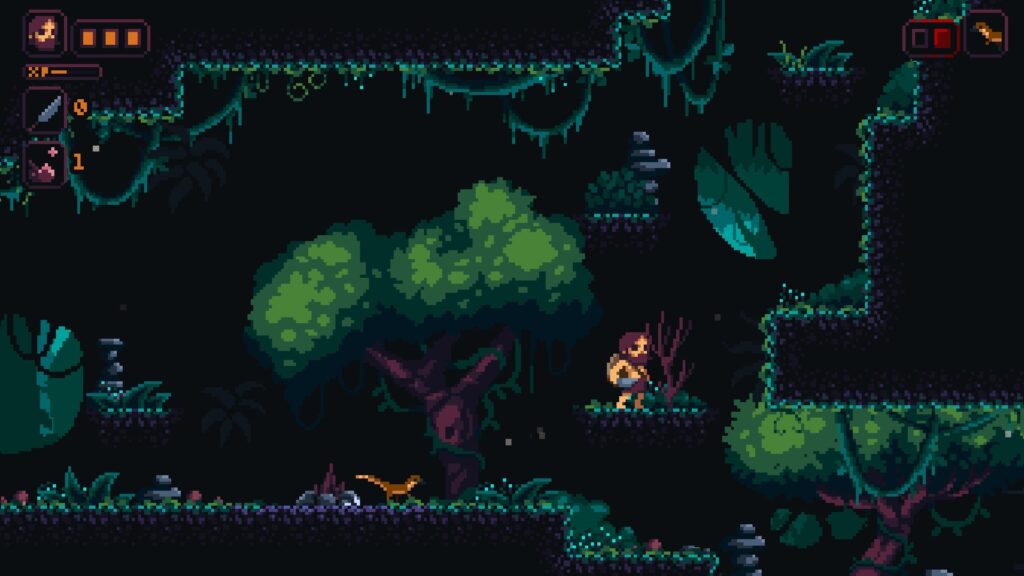
That solo effort explains a lot of the game’s weaknesses too. The janky map, the rough pacing—these aren’t signs of laziness, they’re the cracks in an otherwise stunning piece of handmade art. Knowing it’s all from one creator makes the experience easier to appreciate, even when it’s frustrating.
Final Verdict
Primal Planet is a game I want to love without reservations—but I can’t. It’s beautiful, heartfelt, immersive, and memorable. It’s also messy, confusing, and occasionally maddening. If you’re willing to embrace its flaws, you’ll find a strange and soulful world worth getting lost in. But you’ll probably get very lost along the way.
Should you play it?
Yes—if you have patience, curiosity, and a soft spot for retro-inspired passion projects. Just don’t expect it to hold your hand.
- Developer: Seethingswarm
- Country of Origin: Finland
- Publisher: Pretty Soon, Pretty Soon S.A.
- Release Date: 28 July, 2025
- Platform : PlayStation 5, Nintendo Switch, PlayStation 4, Xbox Series X and Series S, Microsoft Windows, Xbox One
For more interesting articles related to indie games, check out the links below.
